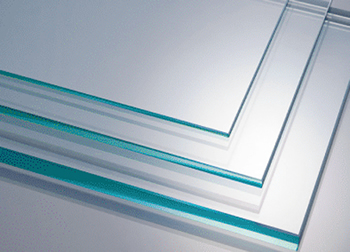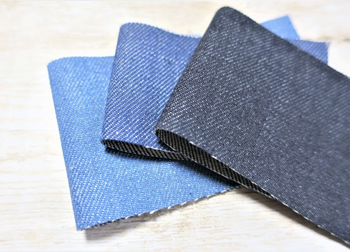- +49 (0)159 0653 1595
- CONTACT US

HOMEWhat is an Electrostatic Chuck (ESC)?
An electrostatic chuck (ESC) is a device that uses electrostatic force to securely hold, transport, or handle objects (workpieces). All materials, though invisible to the naked eye, carry positive and negative charges. When a workpiece is placed on an ESC and a bipolar voltage is applied to its internal electrodes, the positive and negative charges within the workpiece realign to match the polarity of the electrodes. This electrostatic force between the ESC and the workpiece is the principle behind its holding mechanism.

For many, the mention of “static electricity” brings to mind the unpleasant jolt you feel when touching a car door in winter. This mild electric shock occurs when static electricity, generated through friction with clothing, discharges from your body to the metal doorknob. It’s essentially a small electric current that can cause a brief but noticeable pain. In contrast, as shown in the figure, an electrostatic chuck (ESC) simply moves the inherent charges within the workpiece. No actual current flows, meaning it poses no harm to the material or to people. Naturally, you won’t experience any unpleasant shocks when using an ESC, making it a safe and reliable tool. (However, proper usage guidelines and safety precautions should always be followed to ensure optimal performance and safety.) An ESC is a device designed to hold objects using electrostatic force. So, where exactly is it used?
Electrostatic chucks (ESCs) play a crucial role in the manufacturing of semiconductors, which are integral to many modern electronic devices such as personal computers, smartphones, and automobiles. These devices rely on IC chips, often described as the “brains” of electronic components. During the semiconductor manufacturing process, ESCs securely grip silicon wafers—the substrate material—both in atmospheric and vacuum environments, ensuring precise handling. In recent years, the gripping power of ESCs has been utilized to advance factory automation, serving as electrostatic robotic hands. Additionally, new applications have emerged, such as electrostatic bulletin boards that eliminate the need for pins or magnets, offering a safe and innovative way to post notes or decorations. These developments have brought ESCs into the spotlight as tools that enhance convenience in everyday life. In this way, ESCs act as the unsung heroes behind the scenes, supporting the everyday conveniences we often take for granted.
While there are various methods for handling workpieces, such as mechanical clamps and vacuum chucks, why is the electrostatic chuck (ESC) often the preferred choice? The answer lies in its material-friendly design. Unlike other methods, ESCs use electrostatic force to uniformly grip the entire surface of a workpiece, minimizing physical stress. This makes them particularly suitable for handling delicate materials such as thin metal foils or polymer films. With traditional methods, even slight uneven pressure can result in nicks, scratches, or warping, potentially rendering the material defective. In contrast, ESCs ensure gentle yet secure chucking, making them ideal for precision applications.
In addition, ESCs offer exceptional versatility for sturdier workpieces like fabric. They can easily grip materials with perforations, such as mesh, and transport them while maintaining a flat and stable surface. This capability has made ESCs increasingly favored amid the global trend toward automation and labor efficiency. Electrostatic chucks are often compared to vacuum chucks. Let’s take a closer look at the unique features of each.
| Electrostatic Chuck | Vacuum Chuck | |
|---|---|---|
| Use in Atmospheric Conditions | Good | Good |
| Use in Vacuum Conditions | Excellent | Not good |
| Compatibility with Perforated Materials | Good | Fair |
| Responsiveness | Fair | Excellent |
| Noise Levels | Excellent | Not good |
| Power Consumption | Excellent | Not good |
| Cost | Fair | Good |
| Residual Marks | No Residue Left | Prone to Residue |
| Material Compatibility | Affected by Shape and Surface Condition | Unaffected by Shape and Surface Condition |
| Material Size Compatibility | No Tuning Required for Different Sizes | Tuning Required for Different Sizes |
| Power Source | ESC Control Power Supply | Air Compressor |
Even among chucking devices, the differences can be significant.
If you’re facing challenges with your current pick-and-place equipment, we encourage you to consider the electrostatic chuck (ESC) as a solution.
Creative Technology has been a pioneer in the field of electrostatic chucks (ESCs) for over 25 years. In addition to manufacturing new ESCs, we achieved a world-first by successfully refurbishing ESCs, which were previously considered disposable. Our current focus is on developing technology to “chuck all kinds of materials.” Through extensive research into ESC materials and internal electrode patterns, we have made it possible to chuck challenging materials like glass and fabric. Today, our innovations extend even further, as we work on enabling the chucking of three-dimensional objects that were once thought impossible to handle with ESCs.
Chucking is important, but so is de-chucking. At Creative Technology, we focus on enhancing the responsiveness of electrostatic chucks (ESCs) from various perspectives. Our goal is to provide comprehensive system solutions tailored to the practical needs of our customers, ensuring optimal performance in real-world applications. Leveraging our extensive experience, we deliver the best possible solutions to meet your needs. For anything related to electrostatic chucking, look no further than Creative Technology—your trusted partner in innovation.


Q1I would like to verify if my concept is feasible with an electrostatic chuck (ESC).
We have demonstration units of electrostatic chucks and control power supplies readily available. Whether you’d like to send us your workpiece samples, have us visit your site for a demonstration, or conduct a trial at our facility, we are happy to accommodate your needs. Please feel free to contact us for more information.
Q2I want to use an electrostatic chuck (ESC), but I lack experience. Can you assist me?
At Creative Technology, we bring extensive development experience and a proven track record in assisting clients across various industries. We provide comprehensive, one-stop solutions for ESCs and their associated technologies, including power supplies, vacuum integration methods, electrical connection systems, and clamping monitors.
Q3What are the minimum requirements for using an ESC?
You will need an ESC and a control power supply. Our power supply is compatible with standard household outlets (AC 100V). For certain applications, such as the electrostatic display board “ESCLIP,” battery-powered operation is also supported.
Q4Can static electricity negatively affect my workpiece?
Electrostatic chucking generally does not harm the workpiece, as the chucking force is generated by the internal movement of charges within the material. However, depending on the material, residual static charges may remain after chucking and de-chucking. If you have concerns, we recommend conducting a chucking trial beforehand. Please feel free to contact us for more details.
Q5Are there any environments where ESCs are not suitable?
Electrostatic chucks (ESCs) are not recommended for outdoor use or for handling wet workpieces, as moisture can disrupt the generation and retention of electrostatic forces. Similarly, ESCs should not be used in oily environments, as oil can compromise their performance.
Q6Can I use an ESC with automated robots?
Absolutely. We offer custom-designed ESCs tailored to integrate seamlessly with your robotic systems. Additionally, our dedicated power supplies allow for external signal input to control power ON/OFF and adjust applied voltage, ensuring smooth operation in automated environments.
Q7Is it possible to export overseas?
Exporting is possible; however, certain delivery methods or destinations may fall under the restrictions of Japan’s Export Trade Control Order. Please contact us for further details and personalized guidance.
Q1What kind of maintenance is required?
To maintain optimal chucking power, it is essential to clean the adhering surface regularly, as dust or debris can reduce performance. We recommend using a clean wiper dampened with industrial alcohol (IPA) and ensuring the power is turned OFF before cleaning. For the electrostatic display board “ESCLIP,” a dry cloth is recommended for cleaning.
Q2Is it safe to touch the adhering surface?
In general, it is safe to touch the adhering surface. However, for added safety during handling, we recommend wearing rubber gloves. The electrostatic display board “ESCLIP” is specifically designed for safe handling with bare hands.
Q3What are the possible causes of ESC failure?
ESC failure can occur if the adhering surface is damaged, exposing the internal electrodes. This not only disables the chucking function but also poses a risk of electric shock. Do not use the ESC in such conditions. If you suspect a malfunction, please contact us immediately for assistance.
Q1The material does not detach from the ESC even after the power supply is turned off.
We offer tailored development of electrostatic chucks optimized for your operating environment, including recommendations for voltage application methods and charge neutralization techniques. Additionally, we can propose workpiece release mechanisms as needed.
Q2Can an ESC correct warping or curling of workpieces?
In cases of significant warping or curling, correction may not be possible even with an ESC. However, minor warping or curling can potentially be addressed by optimizing the operating conditions of the ESC and power supply. Please feel free to contact us to discuss your specific requirements or to arrange a chucking trial with your material.
Q3How does the chucking and de-chucking time of an ESC compare to a vacuum chuck?
The time required for chucking and de-chucking with an ESC may be longer than that of a vacuum chuck, depending on the material of the workpiece. However, by optimizing the chucking and de-chucking conditions, it is possible to reduce this time. Please feel free to consult us for tailored solutions.
Q4Do you have numerical data for the chucking force?
We do not provide general data for chucking force as it varies significantly depending on the material and surface condition of the workpiece. Conductors, such as metals, are easier to chuck, while insulators, such as glass and cloth, tend to exhibit weaker chucking forces. Additionally, ESCs are strong in both horizontal and vertical directions but weaker against peeling forces. We provide individual chucking tests tailored to your materials, so please feel free to contact us for further assistance.